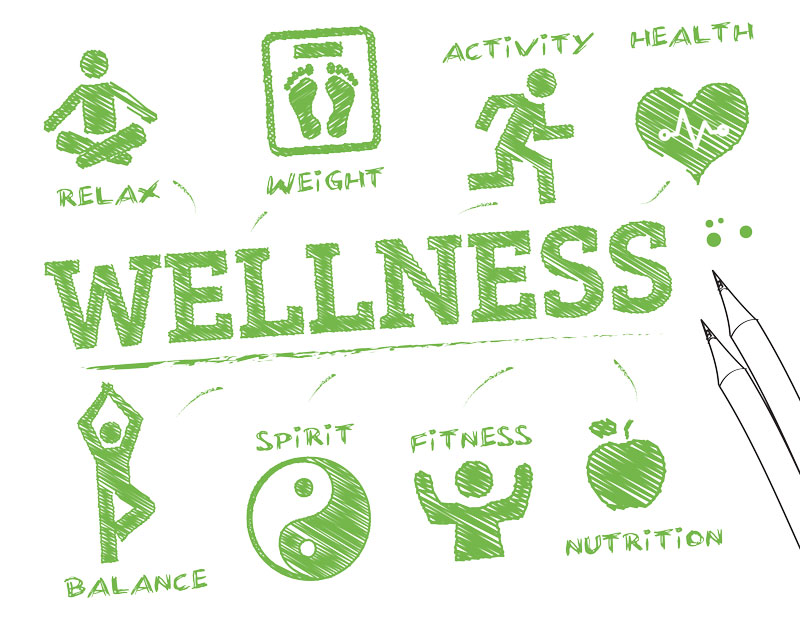This world we live in can be hectic, toxic, and downright overwhelming. Things seem to be moving faster and faster all the time, we’re expected to be connected and available 24/7, and we struggle to unplug from it all. Collectively, we’re a stressed-out bunch. And too often, we turn to temporary or unhealthy solutions to relax, which rarely address the root of the issue.
Instead of going down that road, perhaps we can use the ancient wisdom of Chinese medicine for guidance. We can understand most things in our lives through the paradigm of Yin and Yang. Simply, Yin is calm, restful, restorative, and feminine energy; Yang is active, productive, intense, and masculine energy. These are necessary opposites constantly shifting into, balancing, and sustaining each other. For example, in each 24-hour cycle, day and night are constantly shifting into or out of the other. A fire (Yang) burns only in relation to the quality and quantity of the wood (Yin) available to fuel it.
Through this lens, most activities that trigger stress in our bodies are Yang in nature. The stress response is often referred to as “fight or flight,” and is part of the sympathetic nervous system. It’s specifically wired to protect us from bodily harm. Historically, it compels us to run away from predators, protect our families from imminent danger, or bring home dinner from the hunt. In modern life, it helps us meet deadlines, make presentations, and operate intellectually in the world. So when we perceive a threat or need a burst of productivity, stress hormones flood into our bodies, triggering a cascade of physiological responses to keep us safe or perform the task at hand: more blood flow to muscles, more brain power, quicker reaction times, more available fuel to burn.
The counterbalance is the parasympathetic nervous system, which is Yin in nature. Once the threat passes or the task is complete, the “rest and digest” mode kicks in and brings the body back to homeostasis. When we’re not worried about survival or meeting that deadline, our body’s energy can be focused on all other vital functions of life: digestion, immunity, reproduction, or cellular regeneration. But when we’re in that survival mode, all these other functions shut down.
Now, one way of being is not better than the other, and neither can exist without the other. We need both the parasympathetic and sympathetic nervous systems; we need both Yin and Yang.
Modern life, however, seems to necessitate more of the Yang productivity over the Yin rejuvenation. By using too much Yang energy, we’re burning away our Yin — our body’s resources and fuel. These days, this is the root of the problem. Whether real or perceived, we’re experiencing stress constantly. We’re spending more time in “fight or flight” and not enough in “rest and digest.” And we’re suffering a great deal as a result. Weight gain, infertility, immunity issues, chronic fatigue, depression and many other health concerns are linked to this fundamental imbalance in our lives.
Chinese medicine promotes longevity through proper lifestyle. It gives us “eight limbs” or tools to cultivate a healthy balance between our active and restful states, our stress and relaxation, so that we’re better able to ebb and flow through life. They are:
Nutrition: A Chinese proverb says, “He who takes medicine and neglects diet wastes the skill of the physician.” The food we eat becomes our Qi, or life force, so choosing well is fundamental to our health.
Meditation: No matter the style or form, meditation encourages us to practice presence, commonly focusing on breath or mantra to slow down and still the mind.
Exercise: For most, choosing moderate exercise is best. Walking, qi gong, tai chi, or yoga promote healthy Qi flow and flexibility in the body without adding extra stress.
Bodywork: Tui na, a Chinese form of massage that incorporates acupressure, and other types of massage promote relaxation in the body.
Cosmology: The big picture of the universe, which helps draw connections between the macro and microcosms all around us. For example, we can promote balance in our body by respecting cycles in nature: aligning sleep-wake cycles to natural day-night cycles; aligning our behavior with each season’s unique qualities.
Feng Shui: A philosophy that draws more connections between our outer environment and inner experiences. For example, the more we declutter and create peaceful space in our homes, the more we cultivate harmony in our daily lives.
Acupuncture and Chinese herbal medicine: A licensed acupuncturist and herbalist personalizes each treatment to meet individual health concerns or constitutional patterns. Used together with the other lifestyle suggestions, these therapies assist us in reaching balance more efficiently.
Though thousands of years old, Chinese medicine and its “eight limbs” offers a powerful and effective way to strike that necessary balance between Yin and Yang, maintain vibrant health, and handle stress in modern life.
Tina Grinold, L.Ac, MAOM, is a licensed acupuncturist, herbalist, and women’s health specialist. She works with women to balance hormones naturally and restore vital health, no matter their stage of life. Tina is thrilled to announce she’s seeing patients in two locations: Balanced Health Center for Integrative Women’s Healthcare in Glastonbury, CT & Able Hands Chiropractic in Tolland, CT. Contact Tina directly for more information or to schedule an appointment: tina@tinagrinold.com; 860 268 2092.
